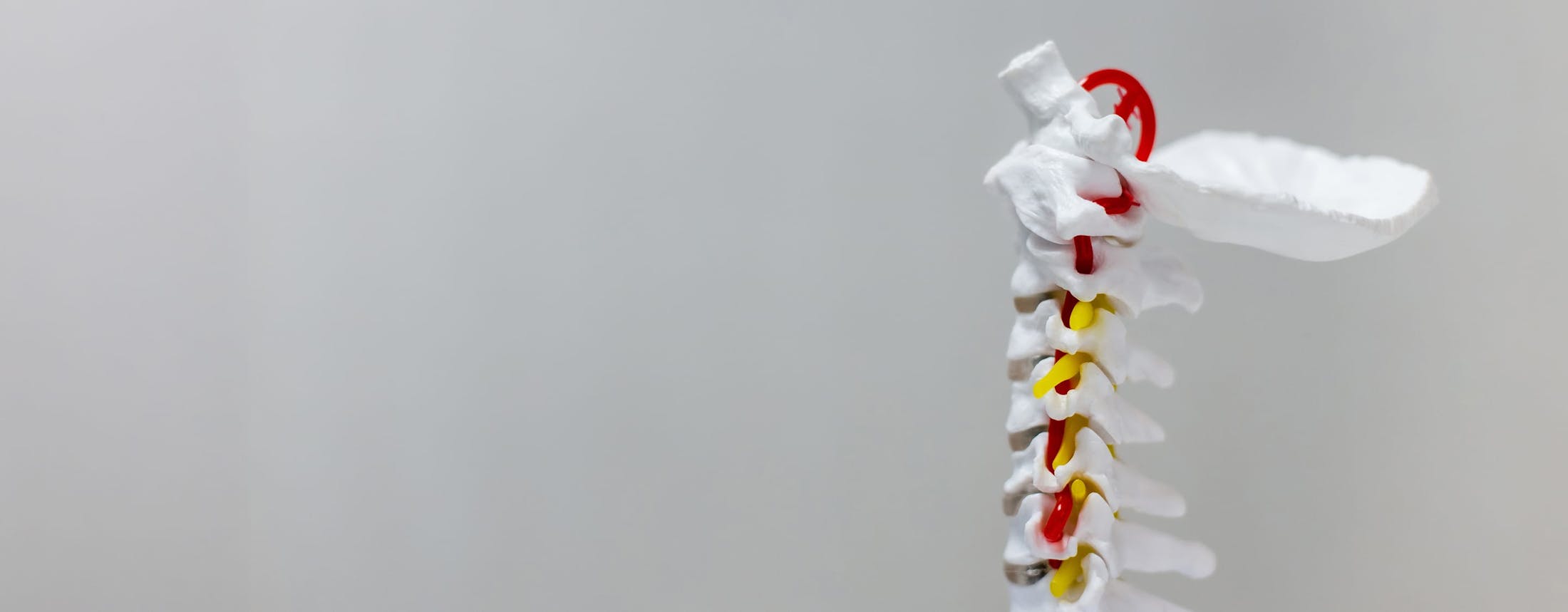Back Overview
At Gerling Spine Care NJ, we specialize in diagnosing and treating back conditions to alleviate pain, improve mobility, and enhance quality of life.
Adjacent Segment Disease (ASD)
Adjacent Segment Disease is a condition where spinal segments near a previous spinal fusion begin to deteriorate, often leading to pain, stiffness, and nerve irritation.
Ankylosing Spondylitis
Ankylosing spondylitis is a chronic inflammatory condition that primarily affects the spine, causing stiffness, pain, and eventual fusion of the vertebrae over time.
Bone Spur
Bone spurs are bony growths that develop along the edges of bones, often in the spine, causing pain, stiffness, or nerve compression depending on their location.
Bulging Disc
A bulging disc occurs when one of the rubbery cushions between your vertebrae extends beyond its normal boundary, potentially leading to discomfort and pain. This condition can affect various areas of the spine and may result in nerve compression.
Chronic Back Pain
Chronic back pain is persistent discomfort in the back that lasts for three months or more, often caused by injury, degeneration, or underlying medical conditions.
Congenital Spinal Stenosis
Congenital spinal stenosis is a narrowing of the spinal canal present at birth, which can compress nerves and lead to pain, numbness, or mobility issues.
Deformity of the Spine
Spinal deformities involve abnormal curves or alignment of the spine, such as scoliosis or kyphosis, which can cause pain, imbalance, or breathing difficulties.
Degenerative Disk Disease
Degenerative disk disease is a condition where spinal discs break down over time, leading to pain, reduced flexibility, and possible nerve compression.
Facet Joint Syndrome
Facet joint syndrome results from inflammation or arthritis in the small joints of the spine, leading to localized pain, stiffness, and decreased mobility.
Failed Back Surgery
Failed back surgery syndrome refers to ongoing or recurring pain after spinal surgery, often due to scar tissue, nerve damage, or unresolved spinal issues.
Foraminal Stenosis
Foraminal stenosis is the narrowing of the openings where spinal nerves exit the spine, which can cause nerve compression, pain, and radiating symptoms.
Herniated Disc (Cervical)
A cervical herniated disc occurs when the soft inner material of a disc in the neck pushes through its outer layer, often causing neck pain, numbness, or arm weakness.
Kyphosis
Kyphosis is an excessive outward curvature of the upper spine that can cause a rounded back, stiffness, discomfort, and in severe cases, breathing difficulty.
Back Injury
A back injury can result from trauma, strain, or overuse, often leading to pain, muscle tightness, and restricted movement in the affected area.
Osteoarthritis
Osteoarthritis is a degenerative joint disease where cartilage breaks down over time, commonly affecting the spine and causing stiffness, swelling, and pain.
Osteoporosis
Osteoporosis weakens bones and makes them more likely to fracture, particularly in the spine, which can lead to pain, height loss, and posture changes.
Pinched Nerve
A pinched nerve happens when surrounding tissue compresses a spinal nerve, resulting in sharp pain, numbness, or tingling along the nerve pathway.
Lumbar Radiculopathy Sciatica
Lumbar radiculopathy, or sciatica, occurs when a lower back nerve is irritated or compressed, causing pain that radiates down the leg.
Sacroiliac Joint Pain
Sacroiliac joint pain stems from inflammation or dysfunction in the joint connecting the spine to the pelvis, often causing lower back or buttock discomfort.
Sciatica
Sciatica refers to pain that travels along the sciatic nerve, typically caused by a herniated disc or spinal stenosis, leading to leg pain, numbness, or weakness.
Scoliosis
Scoliosis is a sideways curvature of the spine that can develop in childhood or adulthood, often causing uneven posture, back pain, or limited movement.
Spinal Cord Injuries
Spinal cord injuries result from trauma that damages the spinal cord, potentially causing loss of sensation, movement, or function below the level of injury.
Spinal Fractures
Spinal fractures are breaks or cracks in the vertebrae that can result from trauma or weakened bones, often causing sharp pain and reduced mobility.
Spinal Stenosis Thoracic
Thoracic spinal stenosis involves narrowing of the spinal canal in the mid-back, which can compress the spinal cord and lead to pain, weakness, or balance issues.
Spinal Stenosis Cervical
Cervical spinal stenosis is the narrowing of the spinal canal in the neck, often causing neck pain, numbness, or weakness in the arms and hands.
Spinal Tumors
Spinal tumors are abnormal growths that develop in or around the spinal cord or vertebrae, potentially causing pain, neurological symptoms, or spinal instability.
Spondylitis
Spondylitis is inflammation of the spinal joints, often linked to autoimmune conditions, and can lead to chronic back pain, stiffness, and reduced flexibility.
Spondylolisthesis
Spondylolisthesis occurs when one vertebra slips forward over the one below it, which can cause lower back pain, stiffness, or nerve-related symptoms.
Spondylolysis
Spondylolysis is a stress fracture in a part of the vertebra, often seen in athletes, and can lead to localized lower back pain or instability.
Compression Fractures Of The Spine
Compression fractures occur when a vertebra collapses, often due to osteoporosis or trauma, resulting in sudden back pain, height loss, or spinal curvature.
Discogenic Pain
Discogenic pain originates from a damaged spinal disc, often due to wear and tear, and typically presents as chronic, localized back discomfort.
Muscle Strain Of The Upper Back Trapezius Strain
A trapezius strain is an overstretching or tearing of the upper back muscle, commonly caused by overuse or poor posture, leading to pain and limited mobility in the neck and shoulders.
SI Pain
Sacroiliac (SI) joint pain occurs when inflammation or dysfunction affects the joints located at the base of the spine, where the sacrum meets the pelvis. Understand causes, symptoms, and treatments.
Radiculopathy
Radiculopathy occurs when a nerve root in the spine is compressed or irritated, leading to pain, tingling, or weakness that radiates along the nerve’s path.

